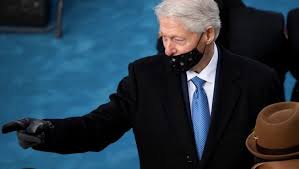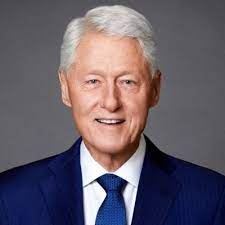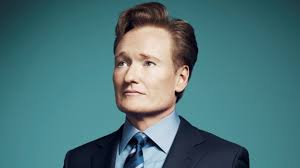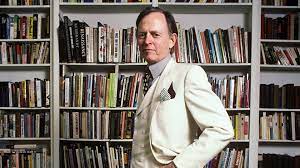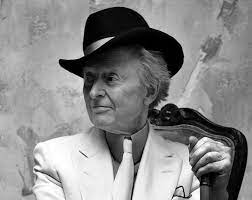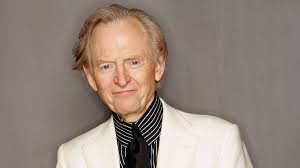PLAY YOUR BEST LINE
One of the most important but least understood functions of male attire is to lead the viewer’s eye toward the face. Understanding the subtle balance that should exist between a man’s most visible and expressive body part – his face – and the clothes that lead up to it is a prerequisite to office dressing. By virtue of its proximity to the face and its configuration of angle, scale, and mass, no article of male apparel is better equipped to enhance a man’s countenance than the appropriately shaped dress shirt collar.
The triangular sector formed below the chin by the “V'” opening of a buttoned suit jacket ‘ constitutes the cynosure of a man’s tailored costume. Several dynamics work to direct the viewer’s focus toward this area. First of all, it is directly under a man’s most animated feature, his face. Second, this triangular encasement is accentuated by contrasts between the darker jacket and the lighter shirt, silken tie and dulled or matte shitting, etc… Again, keep in mind that the face is that destination, where one’s dress, should be escorting the attention of the beholder, think of the face as a picture and what surrounds it as the frame.
Whether or not the colour or pattern of a dress shirt coordinates perfectly with an outfit, if its collar is too small the head will appear large; if the collar sits too low on the neck, it will make the neck look longer than it is. The choice of a dress shirt should be guided first and foremost by the appropriateness of its collar to the wearer’s face, rather than the vicissitudes of fashion or personal whim.
Choosing the appropriate shirt collar requires a bit of experimentation and a little common sense. A small picture requires a comparable frame. just as a smaller man with delicate features requires a collar of more restrained dimensions. Conversely, when the content is more expansive, the frame must enlarge to afford proper balance without distracting from the intended focal point. Just as large tabletops beg for ample pedestals, heavyset or big-boned men require more fully proportioned collars. For example, former President Clinton compensates For his larger jaw with slightly spread collars while balancing his full lace with generously scaled, long-pointed ones. Both Conan O‘Brien and David Letterman possess pronounced jawlines and favor dress shirts with larger proportioned collars on camera.
The length and spread of the collar points should complement the head’s contour and size. Long straight point collars. those 3 inches or more, with little spread between their points, will extend and narrow a wide countenance, just as the broadly spaced points of a spread collar will counterbalance a long and narrow lace. Long-necked men require taller collars with wider neckbands that raise the collar’s height. while short-necked men need lower-sitting collars with a more forward slope. The tab collar or other pin-affixed collars provide additional height that can diminish along the neckline.
The writer Tom Wolfe presents a fairly striking image with his Ichabod Crane~height collars almost Victorian in their stillness and grandeur. But they do camouflage his longer neck. Collars should also counterbalance the Facial structure by either softening its dominant lines or strengthening its weak ones. Long-pointed collars that are either pinned or buttoned down will help to countermand faces with angular features and strong lines. A full face that sags around the chin or checks demand a stiffer collar to counteract the effects of age and gravity. While soft button-down collars are classically stylish. they are too often favored by the double-chinned set, who should expressly avoid them in lieu of a slightly firmer collar.
Throughout the 1980s and much of the 1990s, in an effort to give men more, casual air, fashion designers, unfortunately, tried to neutralize the dress shirt’s traditionally dignified and ordered format. Dress shirt collars were shortened, lowered, and softened to such a degree that their original stylistic precepts were either distorted beyond recognition or lost completely. Abbreviated button-down collars could no longer roll, shortened, straight point collars lost contact with the shirt’s chest, and spread collars sat so low on the neck from their diminished collar bands that they were sapped of all their inherent flair.
Other than the Jermyn Street or odd bespoke products, nowadays most men are wearing dress shirts with collars too small for their faces that sit too low on their necks. And, with the spread collar’s return to the fashion forefront, those men who have adopted the so-called half – or full Windsor tie knot have succeeded only in exacerbating the problem, as its bulbous mass invariably Forces the collar‘s already truncated length points even farther off the shirt’s chest.
Fortunately, toward the late 1990s, dress shirt aesthetics began to follow that of suits by remaining to their custom-tailored roots. Fueled by an Italian revival of classical elegance and the emergence of artisan-made clothes, high-end menswear stepped into the new millennium on bespoke footing. A plethora of readymade dress shirts is now beginning to feature collars that no longer have to apologize For their style-defining presence.
We went through the shirt’s collar, how’s important for a man’s shirts. For the next, we will continue with what type of shirt’s collars.
Source: Dressing the Man Mastering the Art of Permanent Fashion by Alan Flusser






